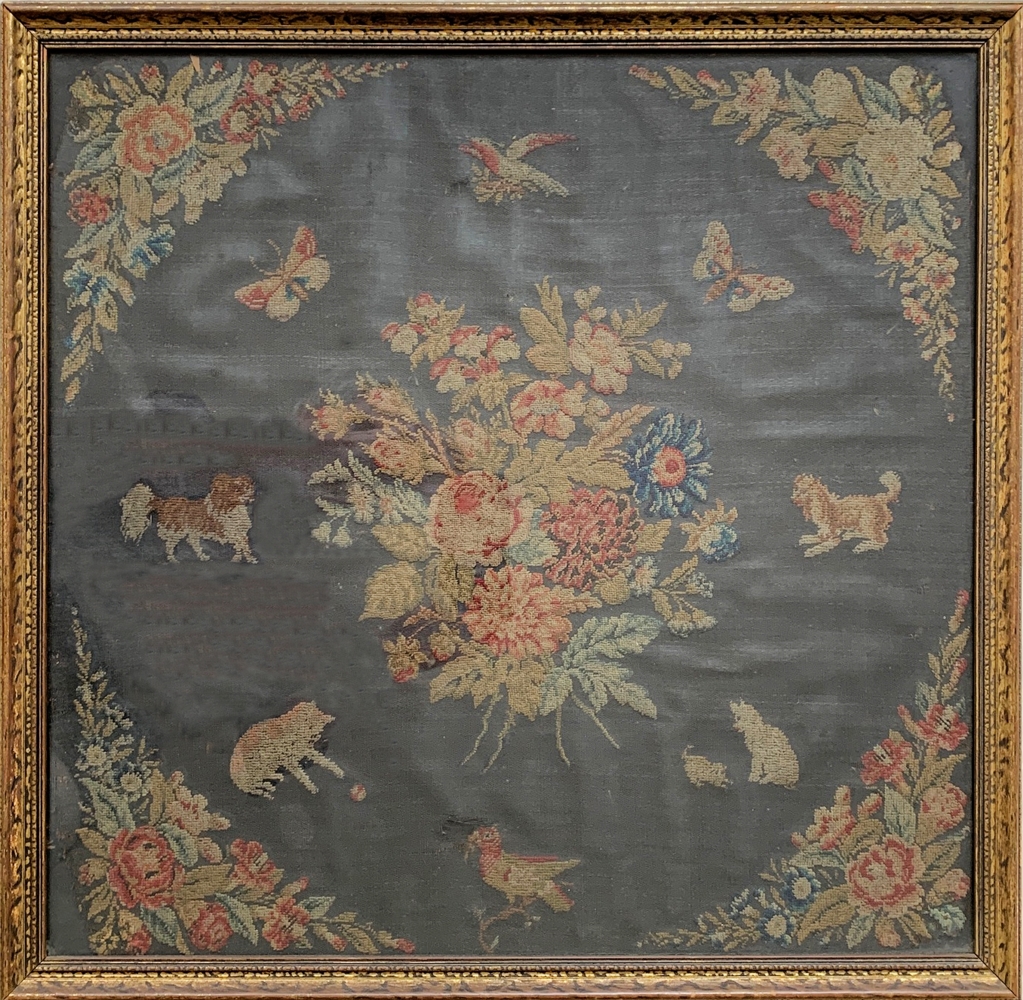
Hand-Embroidered Ottoman Seat
Abigail Rich (1819-1863)
circa 1850
Offers
Shipping $99 Standard Parcel View Options
Questions about this piece
Item Details:
HAND-EMBROIDERED OTTOMAN SEAT COVER
ABIGAIL RICH (1819-1863)
AMERICAN FOLK ART, circa 1850
Dyed Wool on Horsehair Haircloth Fabric
Size: 22.625 x 22 in; 57.5 x 55.9 cm
Excellent example of a hand-embroidery from the seminal naturalism period in America.
In the 1800s, embroidered pictures became a popular form of needlework in America, and young women could learn this challenging needlework technique at specialized academies. (In this case, needlework can be defined as embellishing cloth with designs stitched with a needle and thread.) In addition to patriotic scenes, subjects included classical, biblical, historical, and the ever-popular mourning pictures. By mid-century, embroidered subject matter shifted to depicting natural settings, landscapes, its flora and fauna, themes perfectly in-synchrony with Victorian-era mourning samplers which also proliferated after the death of the England's Queen's husband Prince Albert and the massive toll in the American Civil War.
As an important representative example of its time, the present work illustrates many of the most popular embroidery patterns during this time which included:
1. Floral motifs: Flowers and plants were commonly used in embroidery, with roses, tulips, and daisies being popular choices. These designs were often intricate and featured delicate details.
2. Geometric patterns: Symmetrical geometric patterns were also widely used, including stars, diamonds, and squares. These designs added a sense of symmetry and balance to the embroidered pieces.
3. Animal motifs: Animals, especially birds like sparrows and swans, were frequently depicted in embroidery. These motifs added a playful touch to the designs and often showcased the artist’s skill in capturing the essence of the animals.
4. Fancy borders: Elaborate borders were a prominent feature in 19th-century embroidery. These borders were typically made up of intricate and repeating patterns, such as scallops, waves, or braids, which enhanced the overall aesthetic appeal of the embroidered piece.
5. Monograms and initials: Embroidering monograms or initials was a popular way to personalize belongings. These could be found on handkerchiefs, napkins, and clothing items, adding a touch of elegance and individuality.
Overall, 19th-century embroidery patterns showcased the craftsmanship and creativity of the female artists. The choice of patterns often reflected the prevailing tastes and interests of the time, with a focus on natural elements, symmetrical designs, and personalization.
Provenance: By descent in five generations of the original family. Private collection
Creator: Abigail Rich (1819-1863)
Creation Year: circa 1850
Dimensions: 22 5/8 x 22 in
Medium: Dyed Wool on Horsehair Haircloth Fabric
Movement/Style: American Folk Art
Period: Mid 19th Century
Condition: Good
